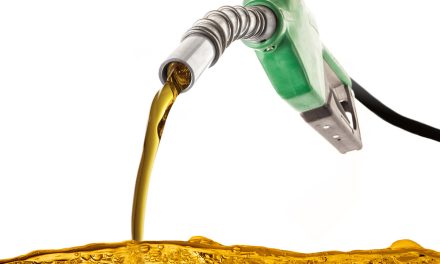Changes in Maritime Fuel Requirements Could Boost 2020 Heat Cracks by $5.00
- Low sulfur fuel for ocean ships mandated for 2020
- Ship owners can comply in several ways
- NGL may become maritime fuel of choice
- Natural gas injections falls short of 5-year average
The Matrix
Changes in petroleum specifications occur regularly in response to changing circumstances. The introduction of ethanol as a replacement for MBTE is one such example. Others may include octane boosters in gasoline or Ultra Low Sulfur Diesel as a substitute for traditional heating oil.
These changes happen routinely and at a measured pace. Responses to environmental concerns have resulted in increasingly lower-sulfur-content fuel oils. The most current change in sulfur content is directed at fuels for ocean-going vessels. Unlike previous spec adjustments, this change will take place in 2020 without ramping up to its full implementation, leaving little time for refiners to adjust facilities.
The change was promulgated in October, 2016 by the International Maritime Organization (IMO,) a 171-member agency of the United Nations. Under the rules, IMO requires reducing the maximum allowable level of sulfur and other pollutants in Bunker fuels to fall from 3.5% to 0.5% by weight by 2020.
The planning challenge for refiners would be difficult in any case, but there are several ways in which users of bunker fuels can meet the requirement. Refiners could blend lower-sulfur distillates into bunker fuels or use low-Sulfur intermediate refinery feedstocks.
Refiners will also have to determine how to deal with residual high sulfur fuels not amenable to further blending. Adding further desulfurization is possible, but not currently economically attractive.
Another alternative for vessels is moving to non-oil-based fuels. And liquefied natural gas (LNG) is a primary alternative. Some analysts believe that LNG may, in fact, be the big winner in the battle of supply to the ocean fleet and the marine sector more generally, as infrastructure for LNG develops.
Ramifications of IMO 2020 spill over to other users of distillate fuel oils. The regulations could add 1.5 million barrels daily to distillate demand in their first year. This is bullish for middle distillate prices outright and could, in the view of some analysts, lead to a five dollar increase in 2020 heat cracks.
Supply/Demand Balances
Supply/demand data in the United States for the week ending May 25, 2018 were released by the Energy Information Administration.
Total commercial stocks of petroleum rose 1.8 million barrels during the week ending May 25, 2018.
There were builds in stocks of gasoline, distillate fuel oil, residual fuel oil, propane, and other oils. Draws were reported in stocks of fuel ethanol and K-jet fuel.
Commercial crude oil supplies in the United States decreased to 434.5 million barrels, a draw of 3.6 million barrels.
Crude oil supplies decreased in four of the five PAD Districts. PAD District 1 (East Coast) stocks declined 1.0 million barrels, PADD 2 (Midwest) stocks fell 1.0 million barrels, PADD 3 (Gulf Coast) stocks retreated 3.1 million barrels, and PADD 4 (Rockies) decreased 0.1 million barrels. PAD District 5 (West Coast) crude oil stocks experienced a build of 1.5 million barrels.
Cushing, Oklahoma inventories fell 0.6 million barrels from the previous report week to 35.5 million barrels.
Domestic crude oil production increased 44,000 barrels daily to 10.769 million barrels per day from the previous report week.
Crude oil imports averaged 7.631 million barrels per day, a daily decrease of 528,000 barrels per day. Exports rose 431,000 barrels daily to 2.179 million barrels per day.
Refineries used 93.9 per cent of capacity, an increase of 2.1 percentage points from the previous report week.
Crude oil inputs to refineries increased 527,000 barrels daily; there were 17.155 million barrels per day of crude oil run to facilities. Gross inputs, which include blending stocks, rose 387,000 barrels daily to 17.436 million barrels daily.
Total petroleum product inventories saw an increase of 5.4 million barrels from the previous report week.
Gasoline stocks rose 0.5 million barrels from the previous report week; total stocks are 234.4 million barrels.
Demand for gasoline was unchanged from the previous report week at 9.689 million barrels daily.
Total product demand increased 234,000 barrels daily to 20.887 million barrels per day.
Distillate fuel oil supply rose 0.6 million barrels from the previous report week to 114.6 million barrels. National distillate demand was reported at 4.319 million barrels per day during the report week. This was a weekly increase of 683,000 barrels daily.
Propane stocks increased 2.0 million barrels from the previous report week; propane stock are 43.1 million barrels. Current demand is estimated at 968,000 barrels per day, an increase of 83,000 barrels daily from the previous report week.
Natural Gas
According to the Energy Information Administration:
Net injections topped the 5-year average for the third week in a row. Net injections into storage totaled 91 Bcf for the week ending May 18, compared with the five-year (2013–17) average net injections of 89 Bcf and last year’s net injections of 74 Bcf during the same week.
Net injections during the week averaged 13.2 Bcf/day; net injections will have to average 13.1 Bcf/day for the remainder of the refill season to match the five-year average level (3,815 Bcf) by October 31. Working gas stocks totaled 1,629 Bcf, which is 499 Bcf lower than the five-year average and 804 Bcf lower than last year at this time. The deficit to the five-year average peaked at 534 Bcf earlier this year during the week ending April 20.
Futures trading involves significant risk and is not suitable for everyone. Transactions in securities futures, commodity and index futures and options on future markets carry a high degree of risk. The amount of initial margin is small relative to the value of the futures contract, meaning that transactions are heavily “leveraged”. A relatively small market movement will have a proportionately larger impact on the funds you have deposited or will have to deposit: this may work against you as well as for you. You may sustain a total loss of initial margin funds and any additional funds deposited with the clearing firm to maintain your position. If the market moves against your position or margin levels are increased, you may be called upon to pay substantial additional funds on short notice to maintain your position. If you fail to comply with a request for additional funds within the time prescribed, your position may be liquidated at a loss and you will be liable for any resulting deficit. Past performance may not be indicative of future results. This is not an offer to invest in any investment program.
Powerhouse is a registered affiliate of Coquest, Inc.
Was this helpful? We’d like your feedback.
Please respond to [email protected]
Copyright © 2018 Powerhouse, All rights reserved.










